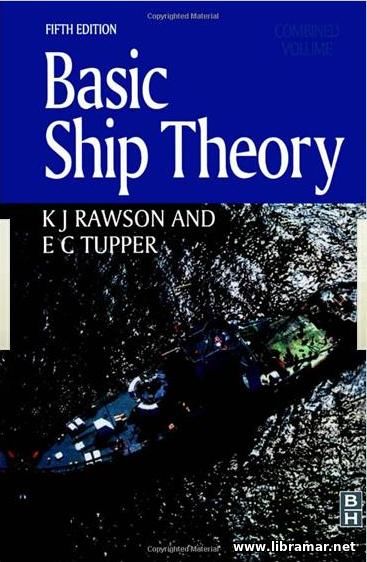BASIC SHIP THEORY

| Author(s) | E. C. Tupper, K. J. Rawson |
| Publisher | Butterworth-Heinemann |
| Date | 2001 |
| Pages | 748 |
| Format | |
| Size | 8 Mb |
| D O W N L O A D | |
Over the past several decades there have been many significant changes in the maritime industry. Vessels of today are much bigger and their speeds are higher, their manning has been reduced; there are now so many types of ships including newly introduced ones, for example hovercrafts; ferries carry much more passengers and vehicles than in the past.
And even taking into account that people may now perform much quicker and much more accurate assessment of the ship stability and strength of the ships' hull together with the maneuvering and powering of the ships and their motions at sea by means of the very complex and specialized computer software, the basic concepts of the naval architecture remain unchanged and are valid as ever.
Some very rapid technical advances have been made in the field of the ship design, ship construction and ship operation, and many of them directly relate to the effectiveness. This is mainly owing to the higher efficiency and lower costs of the computers and proliferation of the available information.
This book of ship's theory consists of two separate volumes providing readers with the coverage of all important aspects, including trim and floatation, ship stability, potential hazards and protection of the ship, hull girder, structural design of the ship and associated analysis, launching of the ships and their docking, powering, seakeeping and maneuverability, major design features and so many others.
The "Read Later" function allows you to add material to this block with just one click. Just click on the icon and read the articles that interest you at any convenient time.


